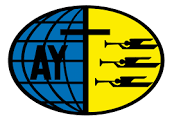History of the Youth Department
James White had a deep burden for the youth and in August of 1852 he published the first edition of The Youth’s Instructor. He wrote: “We are happy to send to you the first number of this title paper. For some time we have been impressed that we had more work to do for youth, but have not been able to commence until the present time.”1 He goes on to challenge the youth of those days and how they were exposed to many evils and dangers. It was that vision that started the youth movement.
In 1879 teenagers Luther Warren and Harry Fenner started the first Seventh-day Adventist Youth Society with nine boys meeting in Luther’s upstairs bedroom. They had a burden for unconverted young people in their little church in Hazelton, Michigan. They reconsecrated their lives to the Lord and then went to work as soul winners for their young friends.2
At this first youth society, officers were elected, and an offering was taken to purchase missionary literature for distribution. A temperance pledge was drawn up and signed. As the weeks went by and the success of the new undertaking was evident, it was decided that girls could also be invited. When this step was taken, the meetings moved to the parlors of various church members’ homes and finally to the Hazelton Church.
Two years later, in 1891, young Meade MacGuire, with the encouragement of the local church elder started a youth fellowship in the Antigo, Wisconsin Church, with thirty members. Meade was unaware of what had happened in Michigan earlier, but these first ripples of what was soon to become a wave of action would spread to other areas and Adventist youth would become a mighty force for good in the remnant church.3
Systematic organizing of the young people of the Seventh-day Adventist Church elicited a response from Ellen G. White, written from Australia, December 19, 1892. The bulletin as presented January 29, 1893 at the General Council meeting in part stated: “With such an army of workers as our youth, rightly trained, might furnish, how soon the message of a crucified, risen, and soon-coming Savior might be carried to the world.”4
During the 1890’s young people’s societies sprang up in state after state, in North America, and overseas. In 1892 a society was organized in Adelaide, Australia under the leadership of Arthur G. Daniels.5
In 1893 the Young Peoples Society of Christian Service was organized at College View, Nebraska, at Union College, “to secure the increased spirituality of the young people, their enlistment in all missionary activities through existing channels of work, and their elevation to a higher plane of living and thinking.”6
In 1894 the first Sunshine Bands were organized by Luther Warren in South Dakota. In 1896 Luther held a convention at Bridgewater for several bands in the state.7
The Ohio Conference led in giving formal recognition to young people’s groups. The summer of 1899, at Camp Meeting, a resolution was passed forming an organization of “Christian Volunteers”, who signed a pledge of service which read: “Recognizing the preciousness of God’s gift to me, I volunteer for service for Him anywhere in the wide world that His Spirit may lead, and in any form of service that He may direct.”8
In 1900 Adventist young people of Germany formed a youth organization within the Church, while in 1903 Young People’s Societies began in Germany. In 1901 societies were organized in Iowa.
- +675 7280 1580
- LillyanneDawa@adventist.org.pg
- District office, Kunai St, Hohola
PNG local missions
- WHM
- NBNI
- SM
- MM
- SWPM
- NMBM
- BM
- CPC
union missions in south pacific division
- AUSTRLIAN UNION
- NEW ZEALAND PACIFIC
- PAPUA NEW GUINEA UNION
- TRANS PACIFIC MISSION
youth related sites
- SPD YOUTH
- GC YOUTH
- NEW ZEALAND YOUTH
- NORTHERN AUSTRALIA YOUTH

